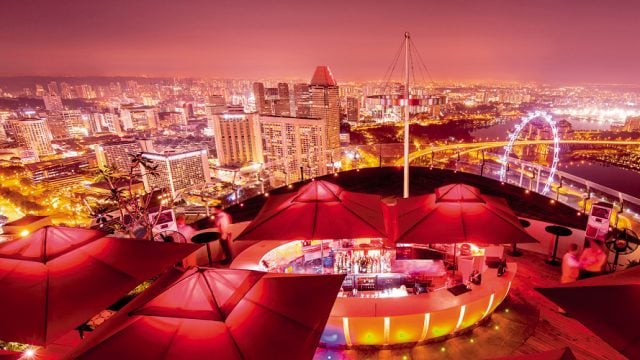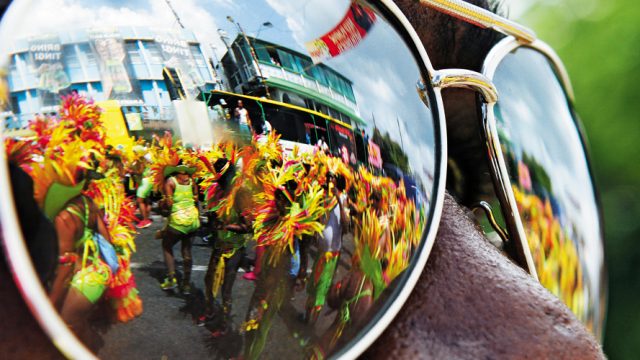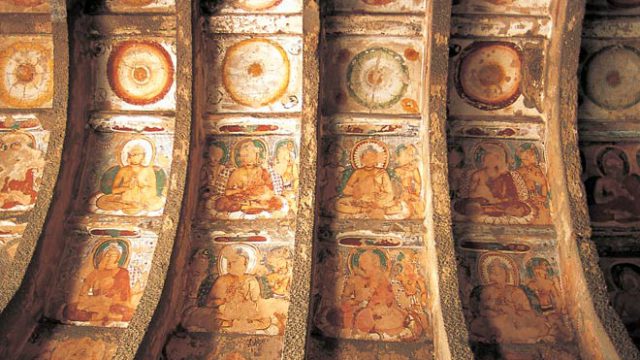I was here before, 42 years ago, with my wife and 15-month-old daughter. That time I
Trinidad and Tobago are the southernmost of a group of islands in the Caribbean Sea—also known as the West Indies—just off the coast of the South American mainland. It is the home of spectacular rainforests, waterfalls, coral reefs and palm-fringed white-sand beaches. Calypso music was developed here in the 17th century when the slaves brought with them the sounds of West Africa. It is also the birthplace of steel drum music with sounds emanating from instruments cut out of oil barrels.
Trinidad and Tobago may seem a long way to go to enjoy their many pleasures but it is a perfect holiday destination if you happen to be in the Americas and want to take time off for some relaxation. It’s a short hop away from Miami to Port of Spain, the nation’s capital, and the air fares are reasonable. There are many Caribbean islands that are full-fledged resorts. Trinidad and Tobago too has wonderful beaches but they are not its only draw. It is also the cultural hub of the English-speaking Caribbean with a lively theatre and arts scene and a major annual carnival. And there are clubs where you can dance the night away.
About 40 per cent of the population is of Indian descent and the country is proud of its multi-cultural heritage. Diwali is a public holiday and Holi, known locally as Phagwah, is celebrated with gusto. You will be surprised how tenaciously our cousins in these distant parts have held on to the traditions their ancestors brought with them from the villages of Uttar Pradesh and Bihar over 150 years ago. I will come to that later.

It is an easy-going country where the various races mix comfortably. A popular pursuit is known as ‘liming’— taking time off to meet friends over good food and drinks. The people work hard and party hard. The annual carnival in February or March, depending on when Easter is that year, is two days of celebration of life with thousands of people participating in splendid, sometimes outrageous, homemade costumes. This annual street party has been dubbed by the locals as ‘The Greatest Show on Earth’. The dancers and musicians compete for prizes while others will smear themselves with mud, grease and body paint before taking to the streets. The revellers delight in getting everyone involved. It’s a good idea to leave your inhibitions back in your home country! Rum and beer fuel the event.

This is perhaps as good a time as any to talk about rum, the gift of the Caribbean islands to the world. For some reason, rum tastes better in the tropics, preferably on a beach with a small paper umbrella sticking out of the glass of your rum cocktail! The best rums come from this corner of the world and every country in the region is proud of its local brands. The distillery in Port of Spain is better known for its other product, Angostura bitters. Every self-respecting bartender will have a bottle on his shelf. It is bitter, of course, but also aromatic and an indispensable ingredient in many cocktails. Chefs and housewives will add it into marinades, soups and puddings. A few drops go a long way. The Angostura distillery also makes excellent rum. On the way out from a tour of the distillery I bought a bottle of their more expensive label, 1919. I liked its exceptional, smooth taste and I intend to drink it neat in a cognac glass after dinner.

Late one evening we drove for two hours each way from Port of Spain to Matura to see the largest turtles in the world. These leatherbacks, as they are known, have survived from prehistoric times and weigh as much as 700kg and measure a metre long. During the egg-laying season, May to August, they haul themselves ashore at night with great effort, dig a large hole and lay over a dozen golf ball-sized eggs. Then they cover them with sand to hatch and head back to sea. It is a laborious process for these endangered species and it takes over two hours. I had arrived in the country late the previous night and I was tired and reluctant to make the long journey. But my hosts persuaded me into going and I was glad I went. It was a once-in-a-lifetime experience to see these wonders of nature.

Next day we drove to the bird sanctuary at the Caroni Swamp. Trinidad and Tobago have over 400 species of birds, one of the richest concentrations in the world. In Caroni alone there were 157 species though I can’t claim I saw them all! What I did see were hundreds of spectacularly beautiful scarlet ibis, the national bird, flying home from fishing expeditions to roost for the night in the marshlands. The guide pointed out to us various birds and animals as he manoeuvred the small boat gingerly through the mangrove growth, a raccoon here, an owl there, and flocks of herons and egrets everywhere. It started raining just as we were heading back to the shore. No problem—a large plastic sheet appeared from nowhere and all of us joined in holding it over our heads till the sudden tropical shower was over.
There are a number of fine dining restaurants in Port of Spain. All upscale hotels have one but I would recommend two standalones popular with Trinidadians as well as visitors: The Town and Chaud are friendly and efficient with a wide range of dishes. As one would expect in an island country, the seafood is particularly good.
But, frankly, my most memorable meal was in a ramshackle place called Asha’s, at Maracas Bay, a fishing village about an hour’s drive north from the capital. I ordered a warm sandwich listed on the board menu as ‘fried bake’ with flying fish tucked between two slices of fried bread. You can order your choice of fish and they will put it in the sandwich. After that you are encouraged to add any of the condiments that are placed along a counter. The choice included tamarind, garlic and mouth-burning chilli sauces. There was also lettuce, tomato and onion. Maybe I was famished after the drive but the sandwich tasted heavenly with a glass of beer. It cost as much as a hamburger.

Tobago, the sister island in the north, is much smaller than Trinidad. You can either take the ferry or a 20-minute plane ride from Port of Spain. The calm, crystal-clear beaches of its west coast provided the inspiration, supposedly, for Daniel Defoe’s famous novel, Robinson Crusoe. The island is home to giant manta rays, turtles, dozens of different species of coral, as well as brilliantly coloured marine life, which you can observe when snorkelling, scuba diving or through a glass-bottom boat. A short distance from the shore, I jumped off the boat and swam and stood in the Nylon Pool where the warm waters were only a few feet deep. It got its odd name from Princess Margaret who was here in 1962 and reportedly said the water was as “clear as her nylon stockings”. One of the popular beaches is at Pigeon Point in the southwest. It is part of a 125-acre nature reserve and the sand is like talcum powder.
Tobago is even more laid-back than Trinidad. Tourists and locals frequent the same beaches and drink at the same bars and nightclubs. The island is long and narrow with the main road running along the entire coast. One day, we toured one side of the island and the next day the other, having our lunch at small open-air restaurants overlooking the ocean.

The main town, Scarborough, is located in the southwest tip and this is where most of the hotels are located. I stayed at Magdalena Grande, an excellent hotel with a world-class golf course, three pools, a spa and tennis courts. Instead of dining in the hotel, my friends and I decided to try out the local joints. The Sea Horse Inn had great seafood while the next evening the bartender at the more casual Café Havana mixed me some heady rum-based cocktails.
It took me 26 hours to reach Port of Spain from Delhi via London and Miami. I travelled in comfort. The Indians who arrived here between 1845 and 1917 were not so lucky. When slavery was abolished by the British rulers, Indians were brought as indentured labourers to replace them in the sugar and cocoa plantations. During this period, over 140,000 men and women were transported from the ports of Calcutta and Madras to the island. Most of them were misled by the recruiters about the conditions that awaited them at the other end. The journey was long and arduous and living conditions onboard were deplorable.
After disembarking at Nelson Island, the arrivals were medically examined and rested for a couple weeks and then sent to the various estates. Some returned to India after their five-year indenture period ended but most stayed back. Their descendants today are prospering in various fields, including medicine, law and journalism. Two of them became prime ministers. Some prominent cricketers in the West Indies team have been of Indian descent.
Soon after arriving in Trinidad, I went to the St James suburb of the capital where the Indians first settled after their servitude in the fields. Here you will still find streets named after our cities: Benares, Agra, Cawnpore, Lucknow, Bombay, Calcutta, Madras… I found the house in which Naipaul lived till he was 18, when he left to study in England. This modest middle-class home is now preserved as a historical landmark. But the man is a controversial figure in the land of his birth.

On my last day, as I sat by the pool with a glass of rum punch, waiting for the ride to the airport, a familiar song of Harry Belafonte floated towards me from someone’s radio. It was from the film, Island in the Sun, made from a 1955 novel with the same title. The author Alec Waugh had visited Trinidad a few years earlier. I remembered the lyrics well: This is my island in the sun/I may sail on many a sea/ Her shores will always be home to me/All my days I will sing in praise/Of your forest waters/Your shining sand…
The information
Getting there
It’s a long haul from India. From Delhi, for instance, you’ll probably have to fly with two stops (one in Europe and one in Miami). Round-trip economy fares start from about ₹90,000. But if you’re already in the US, Port of Spain is a 3-4 hour flight from Miami. To get to Tobago, take a ferry or a 20-minute plane ride.
Visas
Indian citizens do not require a visa if they travel for “business or vacation purposes” for up to three months. They do need to make sure, though, that their passports are valid for at least three months from the date of arrival.
Where to stay
TRINIDAD: There’s a good range of accommodation available here. At the top end are the resorts: Hyatt Regency Trinidad (from ₹14,500; hyatt.com), Courtyard Port of Spain (from ₹12,500; marriott.com), and the Radisson Hotel Trinidad (from ₹11,000; radisson.com). Smart boutique hotels include the Coblentz Inn (from ₹8,000; coblentzinn.com), L’Orchidee Boutique Hotel (from ₹8,000; trinidadhosthomes.com) and Kapok Hotel (from ₹10,700; kapokhotel.com).
TOBAGO: There are no chain hotels here but no dearth of lovely accommodation. Top picks include the luxury eco-lodge Castara Retreats (from ₹8,500; castararetreats.com), Cuffie River Nature Retreat (from ₹7,500; cuffie-river.com), Blue Waters Inn (from ₹6,500; bluewatersinn.com) and Magdalena Grand (from ₹15,000; magdalenagrand.com).
Where to eat
You’re going to eat and drink very well here. Many of the islands’ foods have an Indian provenance (chicken roti aka ‘buss-up shot; aloo pie, akin to a samosa; pholourie, like pakoras; doubles, or chana bhatura; chow, like fruit chaat) but do try those that don’t, such as bake and shark (like a fish sandwich). Top restaurant picks include:
TRINIDAD: The Verandah in St Clair or Veni Mange in Woodbrook (fine-dining Caribbean), Angelo’s in Woodbrook (fine-dining Italian), Buzo Osteria Italiana in Newtown (affordable Italian), Town in Cipriani (Chinese) and Chaud in Port of Spain (international fusion). For local colour and lots of rum, Wing’s in Tunapuna.
TOBAGO: Shore Things in Lambeau (café and crafts), Blue Crab in Scarborough and The Fish Pot in Grafton (fine Creole).
What to see & do

For intense enjoyment, visit at Carnival time (around Easter). Else, you can make do very well at the wide range of bars and nightclubs.
Go on a mangrove tour through the Caroni Bird Sanctuary. Also visit the Asa Wright Nature Centre (asawright.org).
Make a trip to Matura beach to see the leatherback turtles.
Go on a walking tour to take in Port of Spain’s multiple historic sites.
Go snorkelling in Buccoo Reef, off Tobago.
Visit the Angostura Distillery (by appointment; angostura.com).
Calypso Music
Caribbean Sea
Caroni Swamp





